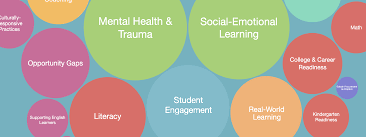Challenges in Achieving Educational Progress in Sindh: The Need for Accountability

Introduction:
The failure of education in Sindh and other parts of Pakistan is a persistent concern. Despite the Pakistan Peoples Party (PPP) being in power consecutively for the past 15 years, there has been little to no improvement in the education sector. Political stability, which is often considered conducive for policy continuity, has ironically had an adverse impact, primarily due to the appointment of politically favored but incompetent district officers of education. While the Secretary of Education highlighted this issue, the broader question is whether he should be commended for his honesty or held accountable for not fulfilling his role. In the backdrop of this situation, the lack of progress in critical education indicators from 2007-08 to 2019-20, including literacy rate, enrollment, gender gap, and out-of-school children, becomes glaringly evident. This analysis underscores the urgent need for accountability and tangible efforts to improve the education landscape in Sindh.
Status of education in Sindh:
Stagnation in Literacy Rate: The literacy rate, a fundamental indicator of education progress, has seen minimal improvement in Sindh. Despite a decade of PPP rule, the literacy rate has only marginally increased by 2%, reaching 58%. This sluggish progress is disheartening, especially considering the transformative potential of education.
Gender Disparities Persist:
The gender breakdown of literacy rates reveals that male literacy has slightly decreased from 69% to 68%, while female literacy improved from 42% to 47%. Despite these slight fluctuations, gender disparities remain a significant issue. Gender inequality in education not only hinders social progress but also limits the full utilization of human capital.
Out-of-School:
Pakistan, unfortunately, ranks among the top countries in the world with the largest proportion of out-of-school children aged five to 16 years. In Sindh, the situation is dire, with 44% of children out of school, rising to a staggering 71% in districts like Thatta. Despite the urgent need for improvement, progress in school attendance and net enrolment rates has been painfully slow, reflecting incompetence and insufficient capacity in planning and implementation within the education sector.
Chronic Problems in School Attendance:
The decline in school attendance among children aged 10 years and older is a cause for concern. In 2008, the attendance rate was 58%, which dropped to 55% in 2019-20. Net enrolment rates at the primary level have only marginally increased from 51% in 2007-8 to 55% in 2019-20, indicating a lack of substantial progress over the past 12 years. Girls’ enrolment rates have only slightly improved by 3%, rising from 46% to 49%. These figures highlight the persistent challenges and the urgent need for comprehensive reforms in the education sector.
Root Causes and Lack of Genuine Intentions:
The dire situation in Sindh’s education sector stems from deeply entrenched problems that have not been adequately addressed. Despite the era of artificial intelligence, the basic issues in education persist,leaving a significant portion of the population trapped in illiteracy and poverty. The lack of significant progress is not solely due to lack of resources but also a result of ineffective policies, insufficient capacity, and, most importantly, the absence of genuine intentions and concern from elected leaders. Both voters and leaders must prioritize education to break the cycle of poverty and illiteracy.
Accountability and Education Reforms:
The root of the problem lies in the appointment of incompetent district officers of education based on political considerations. Their untouchable status has stymied numerous initiatives aimed at education reform and legislation to make education a fundamental right. Accountability mechanisms must be established to ensure that individuals appointed to key education roles are competent and dedicated to fostering progress.
A Lost Decade for Education:
The decade from 2008, when the PPP took over, was expected to bring substantial improvements in education. However, the reality has been quite the opposite. The modest increase in literacy rates and persistent gender disparities underscore the lack of meaningful progress during this period. In an era where the world is moving towards the Artificial Intelligence (AI) era, ensuring literacy for all is not just an aspiration but a necessity.
Conclusion:
The education crisis in Sindh demands immediate attention and accountability. Stagnation in literacy rates and gender disparities are alarming trends that need to be reversed. Effective policies, competent leadership, and a commitment to education reform are essential to ensure that the promises made to improve education are realized. In the era of AI and digital transformation, the importance of education cannot be overstated, and Sindh must act urgently to bridge the educational gap.
Difficult Words with Meanings:
- Mirage: Something that appears real or possible but is not in fact so.
- Untouchable: Beyond criticism or attack; immune to harm.
- Stymied: Prevent or hinder the progress of.
- Aspiration: A hope or ambition of achieving something.
- Perplexing: Puzzling or difficult to understand.
- Staggering: Shockingly large or impressive.
- Entrenched: Firmly established and difficult to change.
- Indispensable: Absolutely necessary or essential.



4 Replies to Educational Challenges: Accountability for Progress
or be bohet sa educationl challegnes hai pakistan ma joka yahan discuss hony chaheya
AISI accountability ho Jai to mülk progress kry
.
Really Pakistan faces these challenges
CSS Punjabi Complete Guide With the Book,Notes,Solved MCQs,Past Papers
CSS and PMS Precis Writing Rules with Complete Guide
Strategies to Score High in Political Science Exam
How to read the newspaper for CSS/PMS
How to read the newspaper for CSS/PMS
Strategies to Score High in Political Science Exam
CSS and PMS Exams: Your Questions Answered
Computer Science Strategies for CSS: Your Ultimate Prep